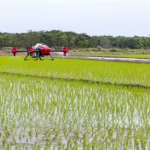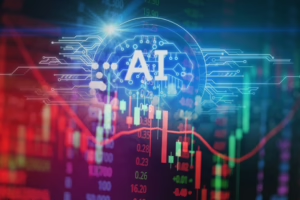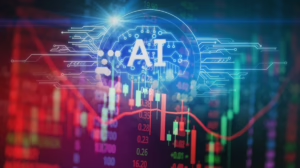Behind the Scenes: How AI is Revolutionizing Visual Effects in Movies
Introduction
The film industry has always been at the forefront of technological innovation, and in recent years, Artificial Intelligence (AI) has emerged as a transformative force, particularly in the realm of visual effects (VFX). From CGI characters to realistic simulations, AI is redefining what’s possible on screen. This article delves into how AI is reshaping the visual effects landscape in filmmaking, exploring its applications, advantages, and the challenges that come with this technological revolution.
The Evolution of Visual Effects
Visual effects have come a long way since the early days of cinema. Initially, filmmakers relied on practical effects, such as models and miniatures. The advent of computer-generated imagery in the 1990s ushered in a new era, with films like Jurassic Park setting a new standard in VFX. Over the years, as technology advanced, the quality and complexity of VFX have skyrocketed, thanks to the integration of AI.
Early Use of Computers in VFX
Before the rise of AI, VFX artists utilized basic computer algorithms for tasks like animation and compositing. Key developments included:
- Digital Compositing: Combining real footage with computer-generated visuals.
- 3D Modeling: Creating lifelike models to represent characters and environments.
These foundational technologies laid the groundwork for the integration of AI in VFX, providing a bridge between traditional techniques and modern methodologies.
Understanding AI in Visual Effects
Artificial Intelligence encompasses various technologies, including machine learning, neural networks, and computer vision. These technologies enable computers to analyze data and make decisions, significantly enhancing the capabilities of VFX artists and their workflows.
Machine Learning
Machine learning allows algorithms to learn from data patterns and improve over time. In VFX, machine learning can be used for tasks such as:
- Image Recognition: Identifying and tagging elements within images for easier editing.
- Style Transfer: Applying the visual style of one image to another, creating unique artistic effects.
Neural Networks
Neural networks, inspired by the human brain, excel at handling complex data. In visual effects, they enable:
- Facial Recognition and Animation: Allowing for hyper-realistic character animations by accurately capturing facial expressions.
- Scene Understanding: Recognizing context, depth, and spatial relationships within scenes.
Computer Vision
Computer vision is crucial for interpreting and analyzing visual data. In VFX, it aids in:
- Motion Tracking: Capturing and replicating real-world movements in digital environments.
- Image Enhancement: Automatically improving the quality of visuals through algorithms.
Applications of AI in VFX
AI’s impact on the VFX process is multifaceted, streamlining workflows and enhancing creativity. Below are several areas where AI is making a pronounced difference.
Pre-Visualization and Virtual Production
AI tools are revolutionizing pre-visualization, making it easier for directors and cinematographers to conceptualize scenes before filming.
Real-Time Rendering
With AI, real-time rendering has become feasible, allowing filmmakers to see complex environments and effects as they shoot. For example, Unreal Engine utilizes machine learning algorithms for instantaneous rendering, providing immediate feedback to directors. This capability enhances creativity and saves time during the production process.
AI-Assisted Storyboarding
AI can automate the storyboarding process, generating visual scripts based on written descriptions or even script dialogues. This functionality allows filmmakers to visualize scenes quickly and efficiently, saving valuable time that can be redirected toward more complex tasks.
Animation
AI’s role in animation has expanded significantly, particularly in character animation and lip-syncing.
Automated Animation
Machine learning algorithms can generate realistic character movements based on motion capture data, drastically reducing the time needed for animators to create lifelike animations. Tools such as Adobe Character Animator make this possible, allowing creators to animate characters by simply mimicking their movements in front of a camera.
Facial Animation
AI-driven software can analyze actors’ facial expressions during filming, automatically generating corresponding animations for digital characters. This technology is exemplified by companies like Ziva Dynamics, which create muscle and skin simulations that react in real-time to an actor’s performance, making CGI characters look more human.
Texturing and Rendering
Creating realistic textures and environments has always been a significant challenge in VFX, but AI is evolving this aspect.
Smart Texturing
AI systems can analyze high-resolution images to create detailed textures for 3D models quickly. These systems learn from existing textures, allowing for the generation of new, unique surfaces without extensive manual work.
Rendering Acceleration
Ray tracing, a technique that simulates light behavior to create photorealistic images, can be time-consuming. AI algorithms can optimize rendering times, providing high-quality results faster. For instance, AI upscaling technologies like NVIDIA’s DLSS (Deep Learning Super Sampling) can enhance image quality while improving frame rates during rendering.
Compositing
Compositing, the process of seamlessly integrating different visual elements into a final image, has been revolutionized by AI tools that streamline workflows.
Background Replacement
AI can simplify and speed up background replacement, a traditional challenge in VFX. Tools like RunwayML employ machine learning for intelligent image segmentation, making it easy to replace backgrounds without complex keying processes.
Rotoscoping
AI can significantly reduce the labor-intensive process of rotoscoping, where artists manually trace over footage to create masks. Tools using AI can automate this work, recognizing and tracking objects, allowing artists to focus on more creative tasks.
Advantages of AI in Visual Effects
The adoption of AI in visual effects provides numerous advantages that benefit filmmakers, artists, and audiences.
Increased Efficiency
By automating repetitive and labor-intensive tasks, AI allows VFX teams to save time, enabling them to focus on the creative aspects of their work. This increased efficiency can significantly reduce production timelines, enabling studios to meet tight deadlines.
Cost Reduction
AI can help reduce costs in the VFX production pipeline. By decreasing the amount of labor required for tasks like rotoscoping, texture creation, and animation, studios can allocate resources more effectively.
Enhanced Creativity
With AI handling technical processes, VFX artists and filmmakers can explore more creative options. They can experiment with new visual styles and ideas without being bogged down by technical constraints.
Improved Quality and Realism
AI algorithms can analyze vast amounts of data, enabling them to produce highly detailed and realistic visuals. This enhancement leads to immersive experiences for viewers, making CGI characters and settings appear more lifelike than ever before.
Challenges of AI in Visual Effects
Despite its advantages, the integration of AI into visual effects is not without challenges.
Quality Control
AI-generated visuals can sometimes lack the artistic touch that human artists provide. It’s crucial for VFX teams to maintain quality control over AI outputs to ensure they meet industry standards.
Bias in Data
Machine learning algorithms are only as good as the data they are trained on. If the training data is biased or inappropriate, it can lead to unsatisfactory results. Ensuring diverse and high-quality datasets is essential for effective AI performance.
Dependence on Technology
Relying heavily on AI can create a dependency that may undermine traditional artistry skills among VFX artists. Maintaining a balance between skill development and technological reliance is critical for preserving artistic integrity.
Ethical Considerations
AI raises ethical questions about authorship and ownership of generated content. As algorithms increasingly generate creative work, questions arise regarding the rights of the original creators and the potential for copyright issues.
The Future of AI in Visual Effects
Looking ahead, the role of AI in visual effects is set to expand further. Emerging technologies and ongoing research will only enhance the capabilities of AI in filmmaking, creating exciting possibilities for the future.
Deep Learning and Neural Radiance Fields
Future advancements in AI could involve more sophisticated deep learning techniques. The development of Neural Radiance Fields (NeRFs) could enable the generation of photorealistic 3D scenes from 2D images, further blurring the lines between reality and CGI.
Improved Collaboration Tools
AI will likely facilitate better collaboration between artists and algorithms, enabling seamless workflows that enhance creativity. Collaborative platforms will leverage AI to connect different teams and streamline communication throughout production.
Prototyping New Visual Styles
As AI continues to evolve, it could help filmmakers experiment with new visual styles, testing them in real-time to evaluate audience reactions before full-scale production. This capability could lead to innovative narratives and visual storytelling techniques.
Conclusion
Artificial Intelligence is undeniably transforming the visual effects landscape in filmmaking. By automating mundane tasks and enhancing the creative process, AI is empowering artists and filmmakers to push the boundaries of visual storytelling. While challenges remain, the advantages of AI in VFX cannot be overlooked. As technology continues to evolve, the collaboration between human creativity and AI will likely pave the way for a new era in filmmaking, captivating audiences in ways we have yet to imagine.
[modern_footnote_source]: For further reading on the topic, consider the following sources:
- "Artificial Intelligence in Visual Effects: The Next Frontier" – VFX Magazine, 2022.
- "AI and its Role in Revolutionizing Animation" – Animation World Network, 2021.
- "The Future of Visual Effects: Merging Art and AI" – Filmmaker Magazine, 2023.
For a deeper understanding of AI technologies, you might explore:
- "Deep Learning for Computer Vision" – by Rajalingappaa Shanmugamani, 2021.
- "Understanding Neural Networks and Their Applications" – by Jason Brownlee, 2020.


























Add Comment